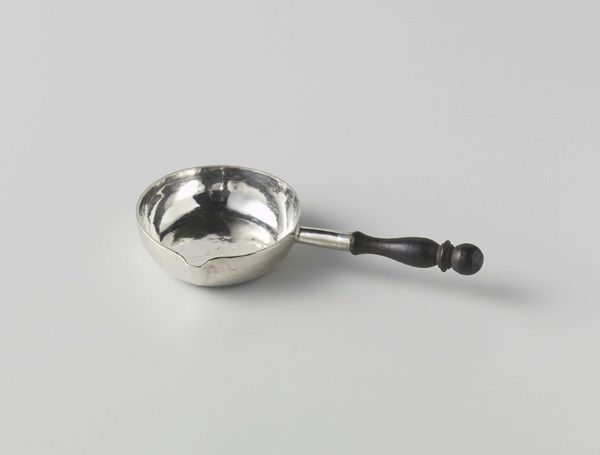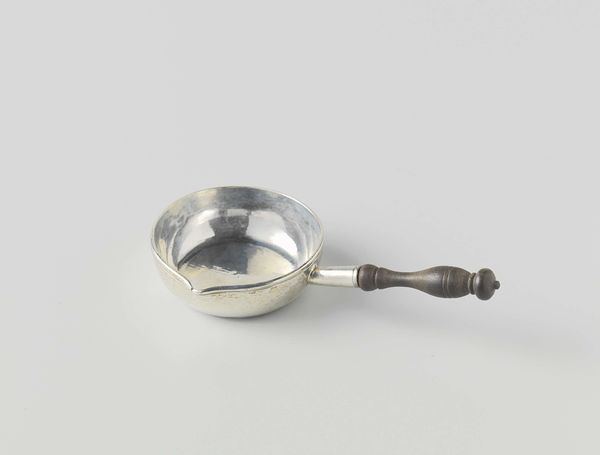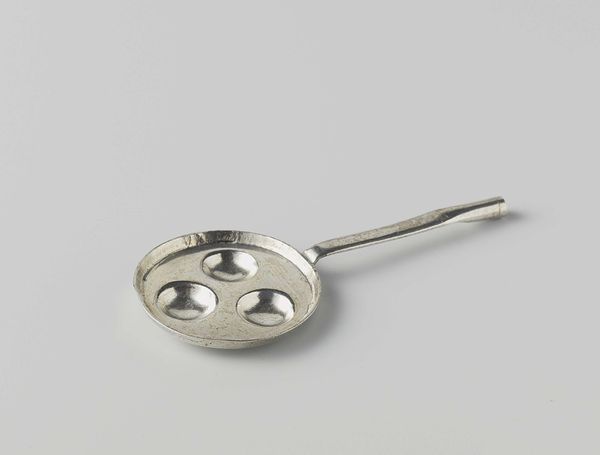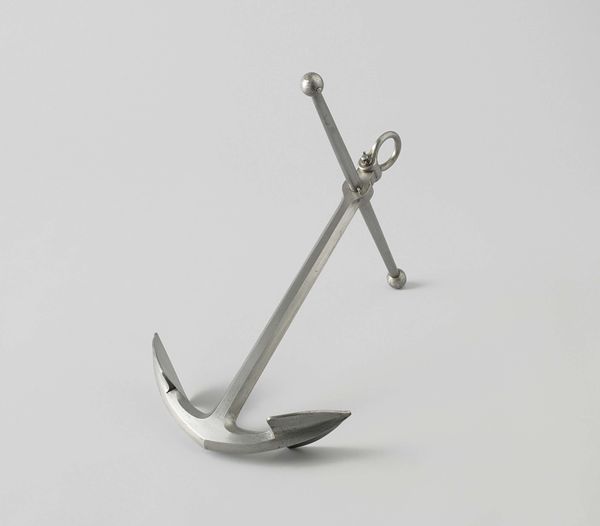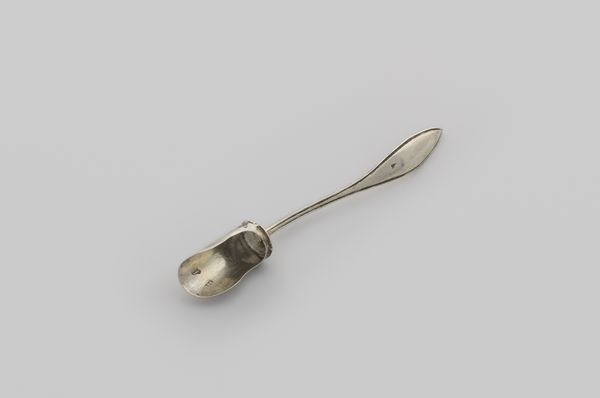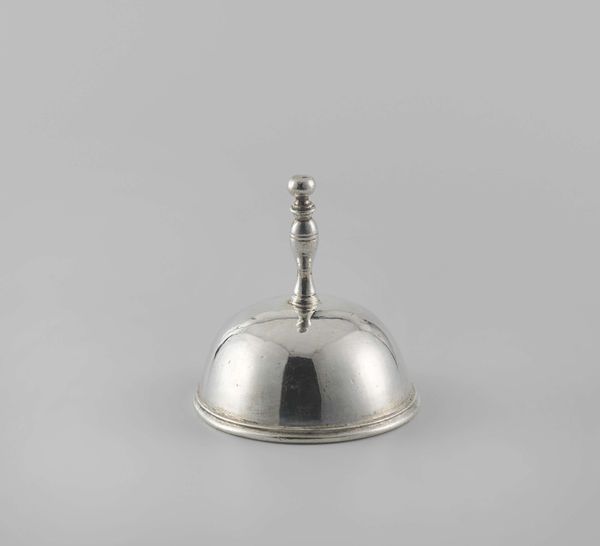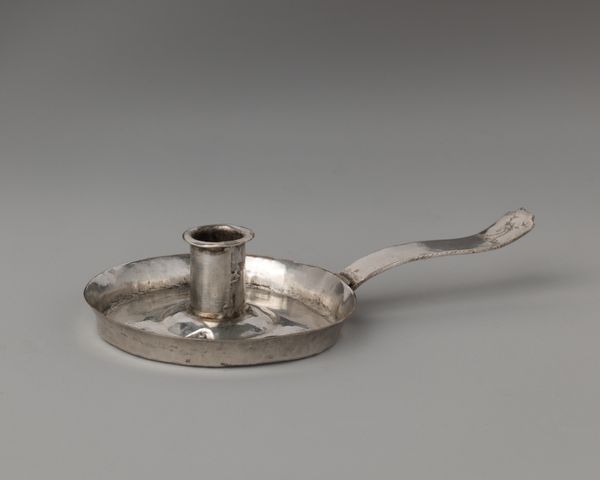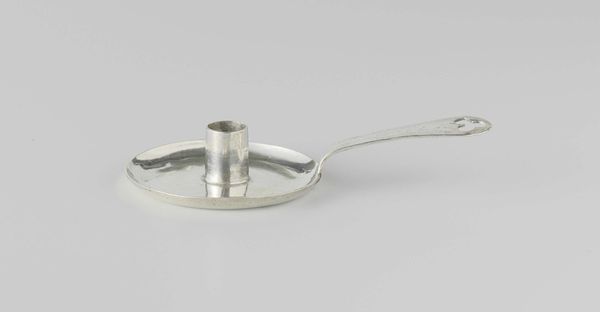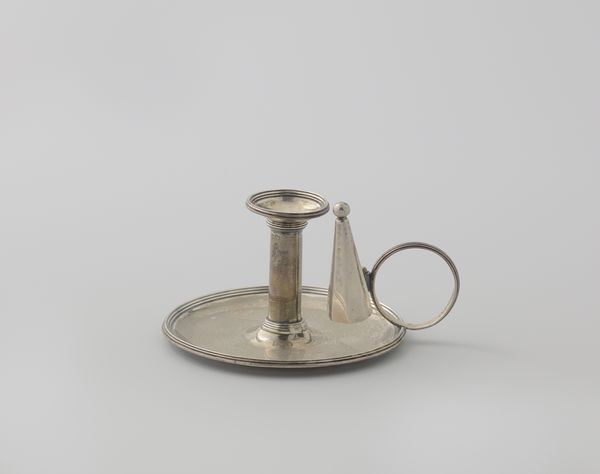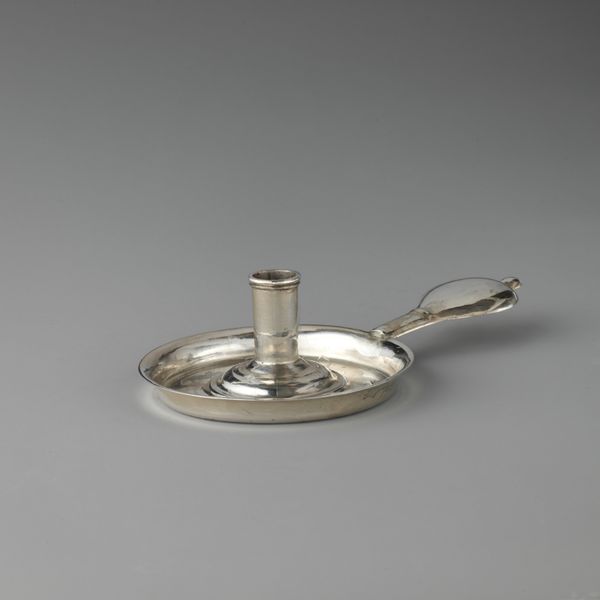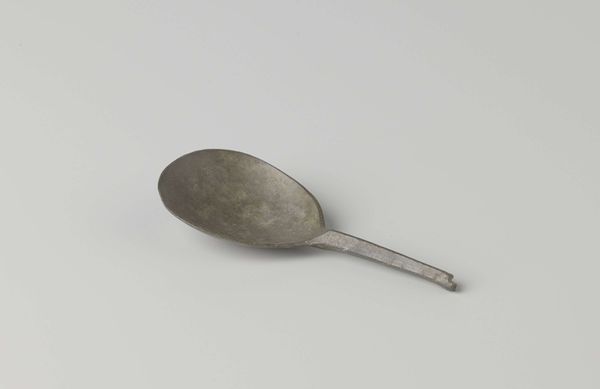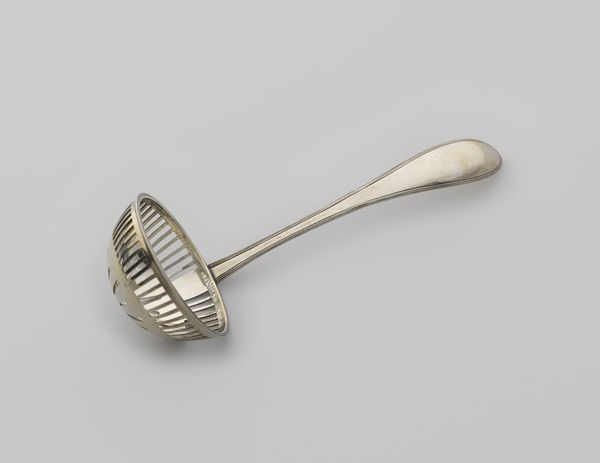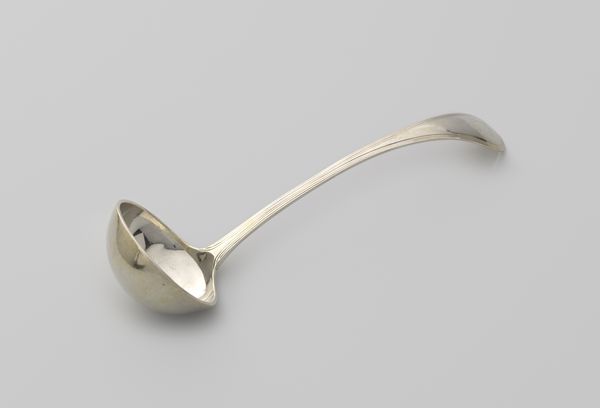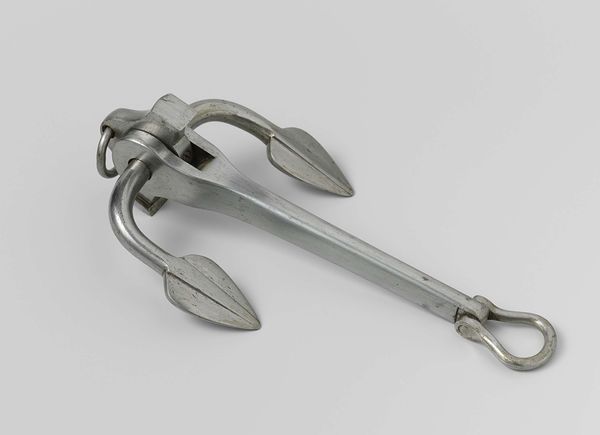
metal, sculpture
#
metal
#
form
#
geometric
#
sculpture
#
line
#
academic-art
Dimensions: length 24 cm, diameter 11 cm
Copyright: Rijks Museum: Open Domain
Editor: Here we have the "Model of an Anchor," crafted around 1860 to 1863. It appears to be made of metal and, in a word, strikes me as surprisingly minimalist for something designed to be so functional. What aspects of this object catch your attention? Curator: Well, let's consider the context. The mid-19th century saw burgeoning industrialization and intense competition amongst maritime nations. What would the purpose of this model be? Editor: Perhaps it was a prototype? A design proposal for a new anchor? Curator: Precisely. Now, think about the role of institutions like Grofsmederij Leiden, the likely creator. They would be vying for contracts with naval powers. A precise model showcases technological capabilities, yes? Its form follows function but also displays mastery of materials. We also see a shift from decorative maritime objects to these very technical designs being prized by an elite, who now determine art making, since many of them commissioned these pieces for their shipping businesses. Editor: That’s fascinating. It's less about ornamentation, more about... power projection? Curator: Absolutely. The anchor, usually unseen beneath the waves, becomes a symbol of control, of nation-building and industrial might presented for social climbing purposes. The "academic art" label assigned to this piece suggests its calculated composition. Do you think that changes your initial reaction? Editor: Definitely. I still see the clean lines, but now I understand them as less minimalist, and more deliberate advertisement. It completely alters how I engage with it! Curator: Exactly, and the history helps us see that. It is also the job of museum curators to share these often obscured historical contexts for our visitors to understand.
Comments
No comments
Be the first to comment and join the conversation on the ultimate creative platform.
